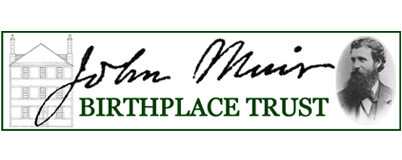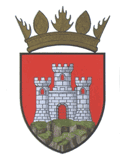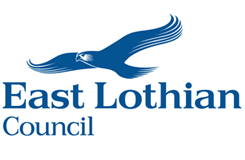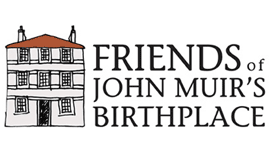Part 3 – The Fate of the Falls
The First Family
The first owner of John Muir’s childhood home, Robert Fall junior, married Mary Melvil of Ceres in Fife during October 1723. She was not yet 20; Robert was 44!
Mary’s dad was William Melvil, factor to the earls of Crawford. Mr Melvil may well have known Robert’s own father (who once held a similar office for the earls of Haddington) in his professional capacity. The couple had two children: Janet Fall (born June 1725) and Mary Fall (born March 1727). We know nothing of Mary; she may not have survived infancy. But then Robert died in 1732 leaving his young widow and 7 year old daughter Janet in possession of the big new house he had intended as the family home.
Now, the situation at that time in Scots law was clear – the house and Robert’s other property and land were Janet’s by right as the sole ‘heir of blood’. If Robert had left a will, he might have:
- assigned a liferent right to Mary Melvil, his spouse, for her security;
- money to support her and Janet;
- arranged ‘tutors’ (guardians) for Janet until her majority;
- and itemised a detailed inventory of his debtors and creditors (i.e., where his cash was invested).
But there was no will. This limbo was a problem for Mary and Janet, because Robert’s financial affairs were inextricably linked to those of his three brothers. And Janet’s uncles were not entirely at one with the law!
The Copartnery: William Fall and Brothers
The brothers William, Robert, Charles and James Fall did most of their business through a formal ‘copartnery’, an early form of joint stock company (it’s complicated). Through this they managed their shipping interests, their international trade (the Baltic and Russia; the Low Countries; France and the Mediterranean; the American colonies), and their contacts with their London and Edinburgh bankers. But other local deals were conducted individually, by some of the brothers jointly, or in association with non-family merchants. In reality, if that wasn’t enough, matters were complicated even more because a large proportion of their overseas trade was conducted without bothering with the niceties of customs and excise. By law, all transactions ought to have been documented in ledgers. In practice much of the actual business of the brothers was done ‘off the books’, although a ‘sanitised’ set may have been kept for official inspection.
Not for nothing did they win a reputation as great smugglers: as early as the summer of 1703 William had been caught illegally lading his ship with forbidden goods and was hauled up before the Burgh Court. It was an offence stated to have been committed ‘sundry tymes’ before. To sort this the brothers gradually secured control of the Burgh Council, by which means they ensured that severe penalties for their continual appearances in court could be avoided.
The complex web of mutual financial obligations and shady dealing had a direct effect on Janet Fall’s inheritance. It appeared at first there was nothing to be had! Her uncles assumed her tutory (guardianship) but offered her only an annual pittance – after all, Janet was a child and there was more than a slight chance she would not survive until maturity. A poor investment risk for the uncles. But although she herself was young, Janet’s mother was determined and she pressed her daughter’s case. It took years, increasingly demanding lawyer’s letters, and through the courts all the way to the Court of Session (Scotland’s highest) for the uncles to even attempt to disentangle their late brother’s share from their own. As time passed mother and daughter continued as best they could; perhaps the big house was rented out – we don’t know.
Finally, in 1744 (12 years of persuasion!), the now grown Janet was able to close her father’s estate. She may not (certainly did not) have got all she was owed, but at least her uncles had finally produced accounts, some money and land titles, and the house was securely in her name. Mary and Janet were now settled and ready for the next stage in their lives.
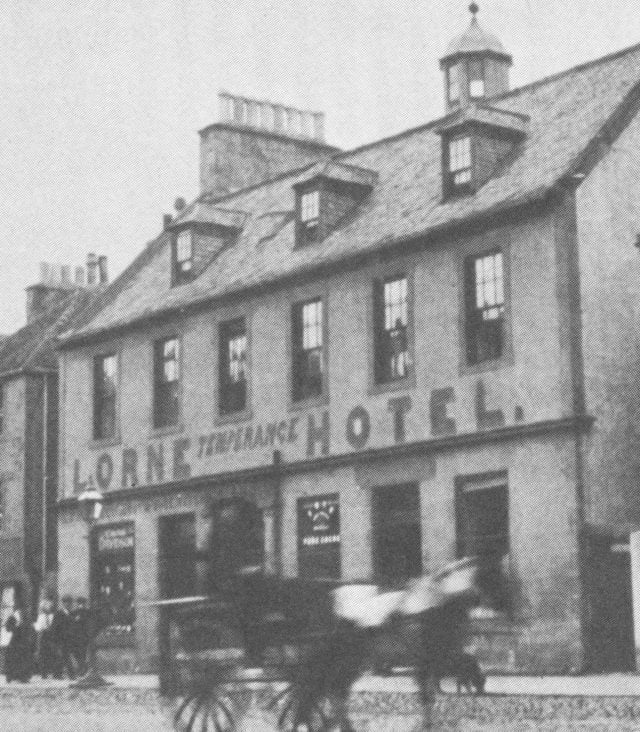
Janet Fall’s House – an Officers’ Billet? (cropped from https://commons.wikimedia.org/wiki/File:John_Muir_birthplace.jpg)
The ‘45 and More – a Marriage
Janet and Mary’s peace did not last long. About the middle of September 1745, the sails of a fleet appeared off Dunbar. On the 18th General John Cope’s army began to disembark and was joined by the army’s dragoons, retreating overland in front of the advancing Jacobite rebels raised by Charles Stuart in the Highlands and marching south. Now the rebels were in Edinburgh, just 28 miles away!
With the dragoons was a Lieutenant Philip Delisle. He and the army were in Dunbar only a few short days. But it was enough to set in train the next chapter in the story of John Muir’s childhood home.
The army, and Lt. Delisle, marched of to ignominious defeat at Prestonpans but ultimate victory at Culloden the following year. Lt. Delisle survived unscathed and, returning to Dunbar, renewed acquaintance with his friends. On 19th December 1747 he and Mary Melvil Fall were married. He came with a pack of children from a former marriage: Janet Fall now shared her house not just with a new-step father but three little step-siblings – 9 year Elizabeth (born 1728) and the infants Philip junior (March 1744) and Ann (June 1745).
Another Military Marriage
The north of Scotland was under occupation for some years after Culloden and the failure of the Jacobite cause. Soldiers were everywhere, even in the Lowlands. The towns they passed through owed a duty to billet the troops where they could (this was still an ongoing burden on the town a century later, as John Muir himself recalled). Barns, halls and stables were impressed for the men while the officers were hosted in the better houses. Sometime during this period other connections might be made. Thus, the Dunbar house saw a second wedding party when in 1751, at the age of 26, Janet Fall married Cornet John Barton of Springton (near Londonderry in Ulster). Janet stayed close to her soldier husband and lived much the rest of her life In Ireland. The Delisles now made Janet’s house their home.


